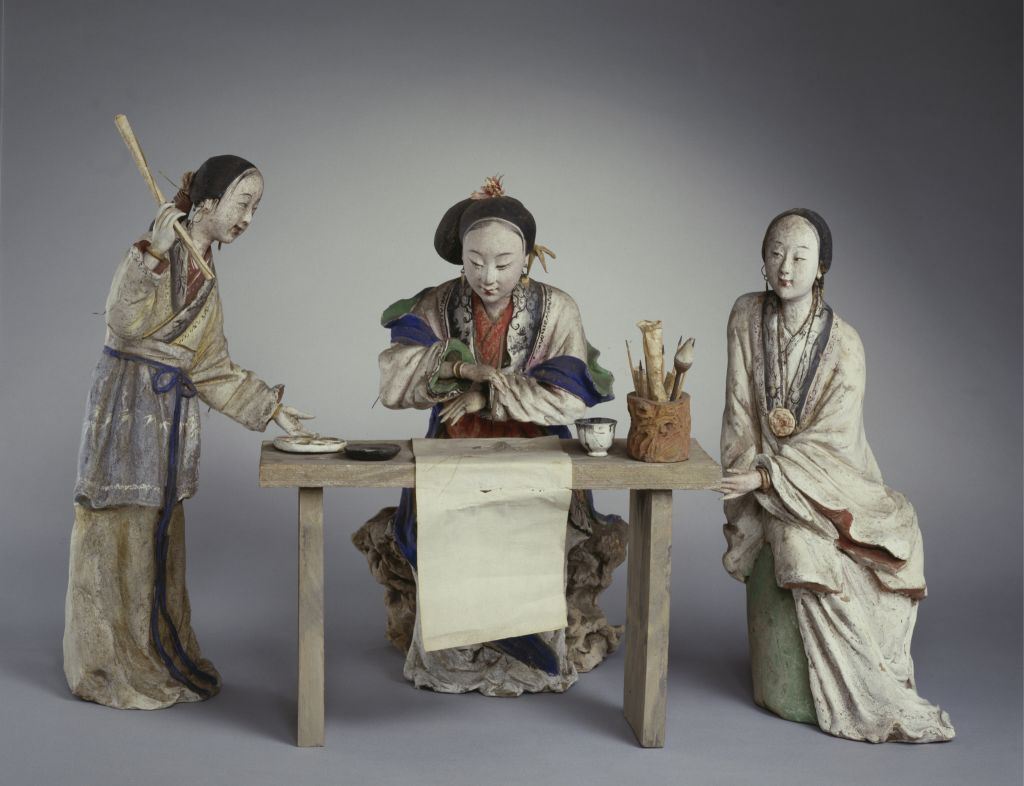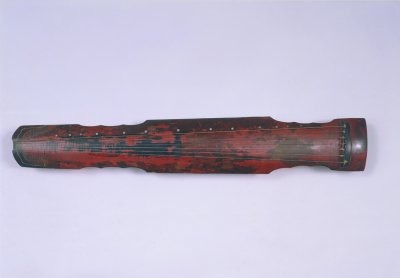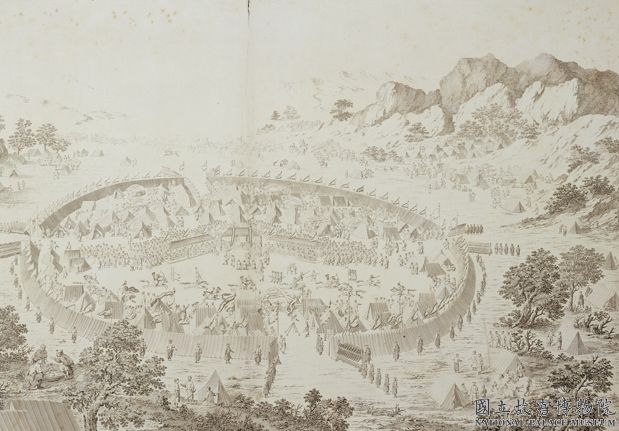[Dai Jin’s Traveling Map Axis]
The Traveling Map Axis of Guanshan, Ming Dynasty, Dai Jin’s painting, paper edition, color setting, 61.8 cm vertically and 29.7 cm horizontally
The signature “Jing’an” on this page has no model year. Judging from the mature integrated appearance, it is regarded as the Tianshun period (1457-1464) in Dai Jin’s later years
The theme and layout of the works are derived from the faction of Li Cheng and Guo Xi in the Northern Song Dynasty. The picture depicts a high and far-reaching panoramic landscape, with the main mountain in the middle, towering and majestic, with the left and right scenes set against each other, forming a stable pyramid-shaped composition with great momentum. The landscapes are closely connected with nature, and the sense of distance and profundity is mainly reflected by the internal connection between the landscapes. For example, the village is arranged in the middle view, with slope dikes, dirt roads and stone barriers, pine trees, river surface, and slab bridges in the foreground, and the jungle and mountain path are connected with the steep mountains and city towers in the distant view, from the near to the far, from the bottom to the top. The scenery has overcome the marks of the artist’s immaturity in his middle age, that is, the height and distance are created by unnatural tree and stone piling or artificial cloud placement, which shows that Dai Jin has better understood the advantages of the northern Song landscape in his later years, attaches importance to the natural layout, and strives to be true and natural
The life scene displayed in the picture is real, vivid and full of vitality. Three donkeys loitered on the nearby Banqiao Bridge. The two travelers carried the load and carried the basket behind them, showing a relaxed state that was about to rest after a long journey. In the middle view, there are a few simple huts in the village. During the activities of many people, there are travelers who unload their burdens and ask questions, there are shopkeepers who entertain guests, there are children who sit and play, and there are dogs who stand at the village head. These plots truly convey the simple and peaceful life atmosphere of the remote mountain village. There are also those who pull donkeys up the mountain and those who bow down to carry the burden down the mountain on the Yuanyuan Mountain Path, showing another kind of hardship. The environment is habitable and tourable, and the visitors feel as if they are on the spot. For example, Guo Xi of the Northern Song Dynasty advocated in “Lin Quan Gao Zhi”: “It is better to be habitable and tourable than to be feasible and predictable.”
This painting method presents a comprehensive picture. The shape of mountains and rivers is the best of all families. The high main mountain is close to Li Tang, the stone is like Guo Xi, the strong and straight pine is like Liu Songnian, the dense moss spots and bushes are also taken from Sheng Mao, and the combination is proper and natural. The patchwork and distortion traces in the middle age are small. The overall momentum is both majestic and vigorous, lush and clear, reflecting the painter’s pursuit of integrating the characteristics of the north and south mountains and rivers into one, and integrating the masculine and the feminine. In terms of pen and ink, it is also flexible to use according to the image. The combination of hooking, texturing and dyeing, the blending of dry and wet, the combination of center and side strokes, the alternation of roundness and strength, and the variety of texturing methods, including axe chopping, hemp dressing, and ideas. The rich texturing methods, including leaf clipping, leaf spotting, and needle gathering, show a variety of changes and very sophisticated skills. This picture can be regarded as the masterpiece of Dai Jin in his later years.
![图片[1]-Map axis of Dai Jin’s trip to Guanshan-China Archive](https://chinaarchive.net/Ming dynasty/painting/882.jpg)

![[Qing Dynasty] British female painter—Elizabeth Keith, using woodblock prints to record China from the late Qing Dynasty to the early Republic of China—1915-China Archive](https://chinaarchive.net/wp-content/uploads/2022/11/image-191x300.png)



